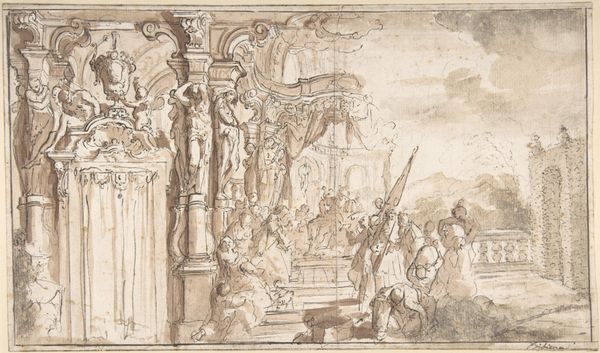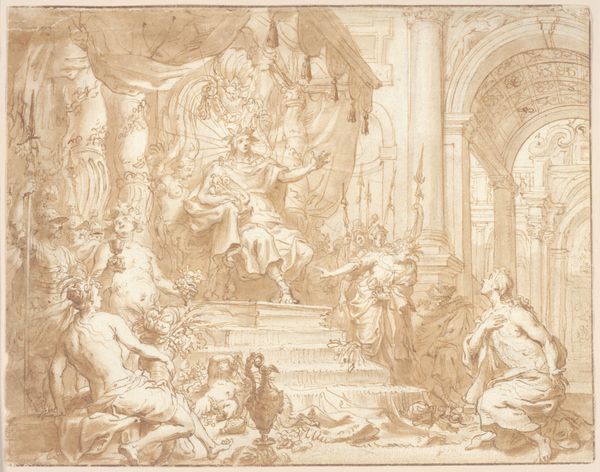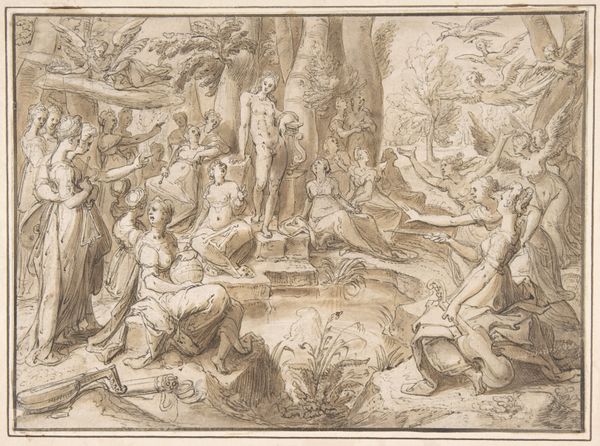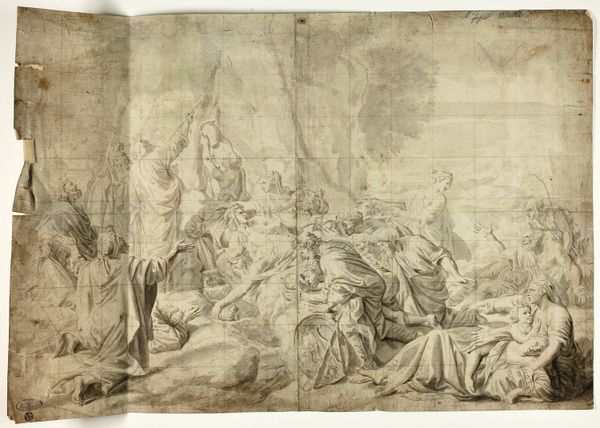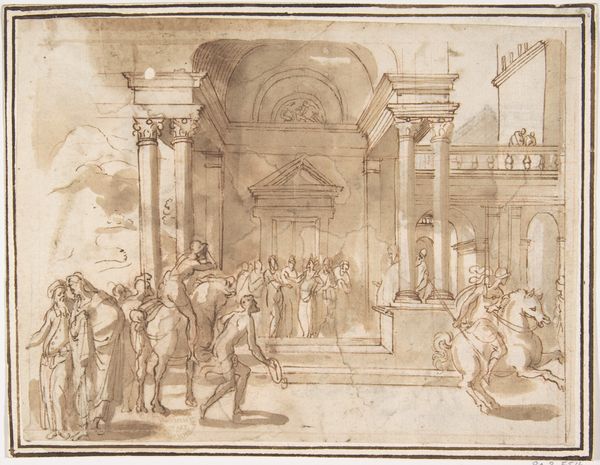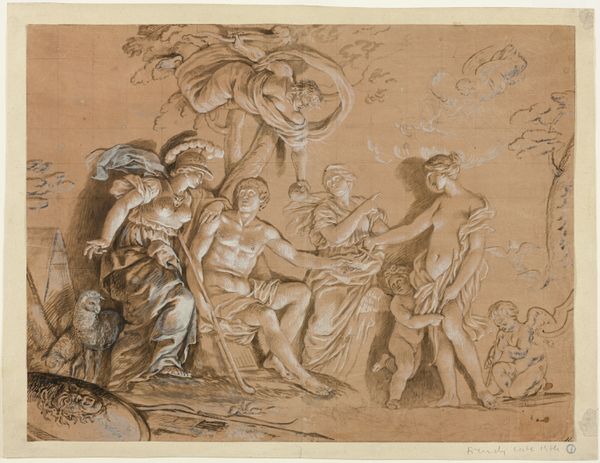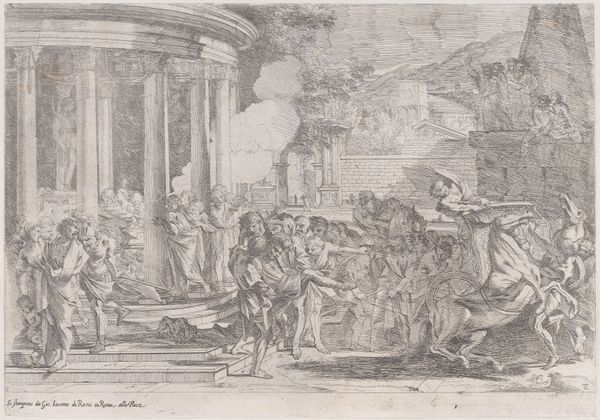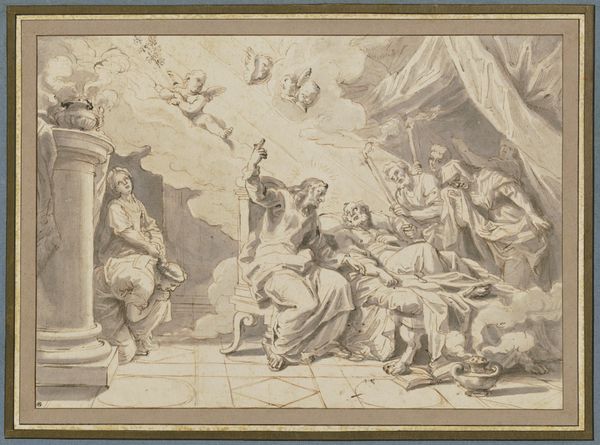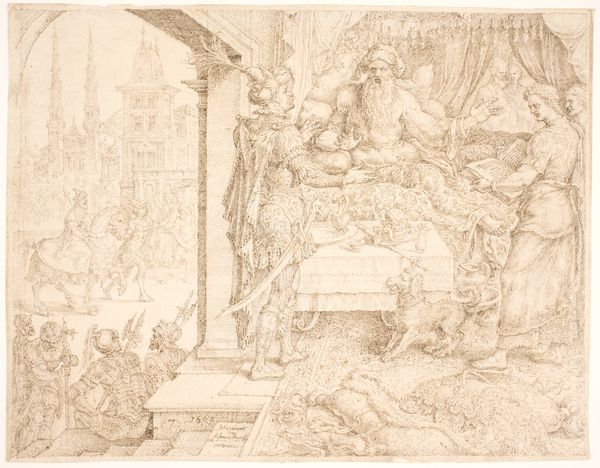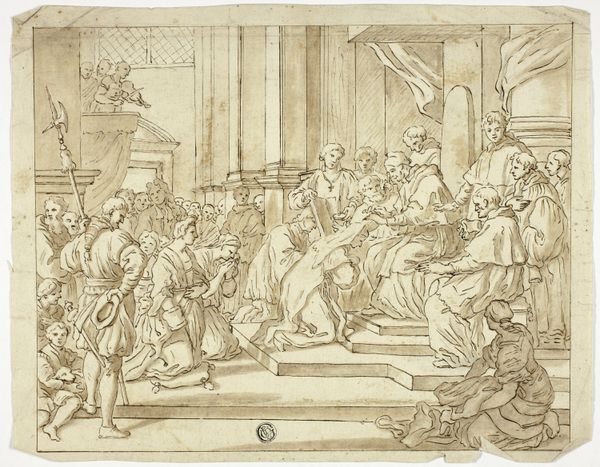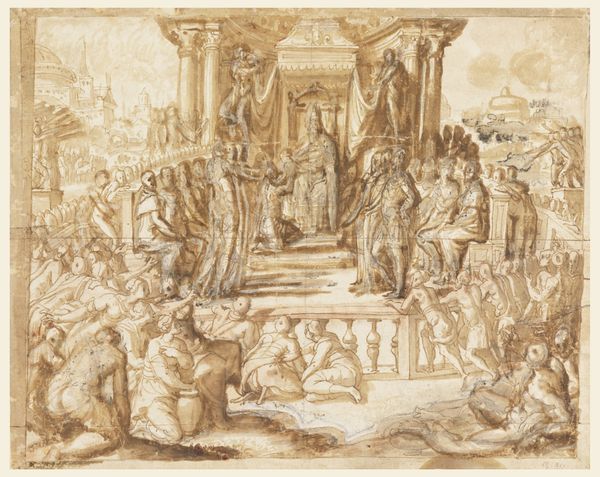
Den hellige familie. F.o. syngende engle. I baggrunden Michaelskirken i München til hvis tårn engle bringer byggemateriale 1540 - 1599
0:00
0:00
drawing, ink
#
drawing
#
ink painting
#
figuration
#
11_renaissance
#
ink
#
history-painting
#
italian-renaissance
Dimensions: 244 mm (height) x 301 mm (width) (bladmaal)
Editor: This is "Den hellige familie," or "The Holy Family," by Friedrich Sustris, made sometime between 1540 and 1599, using ink. It has such a fantastical feeling, seeing angels bringing materials to build the Michaelskirche in Munich. What first strikes you about the composition of this work? Curator: Immediately, the dichotomy of the earthly and ethereal realms, skillfully rendered in ink, captures my attention. Notice how Sustris contrasts the solidity of the architectural forms with the airy, cloud-like depiction of the angels. The composition uses diagonal lines and the interplay of light and shadow create depth, directing the viewer’s gaze from the divine scene to the earthly construction. How does this division affect your reading of the artwork? Editor: It's almost as if he's trying to blend two separate realities. The clear architecture contrasts to the more vague cloud of the heavenly bodies. Does the Renaissance style emphasize a similar juxtaposition? Curator: Precisely. The Renaissance saw a resurgence of interest in classical ideals, including proportion and harmony, reflected in the architectural precision here. At the same time, the religious subject matter underscores the era's continued spiritual devotion, visualized through the more free-flowing rendering of the angels. Note, too, the use of line – precise and controlled for the building, more gestural for the figures. The use of differing line weights creates a captivating contrast that elevates this study to an autonomous work of art. Editor: That’s fascinating! I hadn’t thought about the line work in that way. Seeing how the materials contribute to the separation, while combining subject matter and line-weight together gives an entirely different depth. Curator: Indeed. This meticulous attention to form and the dialogue between different visual elements contribute significantly to our understanding and appreciation of Sustris’ work. Hopefully, a new formal understanding of a historic piece allows a greater degree of contextual expansion for future exploration.
Comments
No comments
Be the first to comment and join the conversation on the ultimate creative platform.
